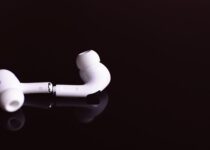Can Headphones Indent Your Skull?
In today’s fast-paced digital age, headphones have become an indispensable accessory for millions of people around the world.
Whether we’re commuting, working out, or simply unwinding, these devices provide a gateway to a world of immersive audio experiences.

However, with the rising popularity of headphones, concerns about their potential impact on our health and well-being have surfaced, sparking intriguing questions such as: Can headphones indent your skull?
Let’s navigate through the intricate pathways of the human body and the detailed world of headphone technology to discern the truth behind the captivating query: Can headphones indent your skull?
Can Headphones Indent Your Skull?
Yes, prolonged use of headphones can potentially cause temporary indentations on the skull’s surface.
However, it’s important to note that these indentations are usually cosmetic and not a significant health concern.
They are the result of continuous pressure exerted by the headphones’ headband on the soft tissues and skin of the skull.
These indentations are not permanent and typically resolve shortly after removing the headphones.
If you ever notice such indentations, they should not be a cause for major concern and will likely disappear on their own.
Read: Do headphones cause ear infections?
How to Get Rid of Headphone Indents on Your Scalp or Hair?
To get rid of headphone indentations on your scalp or hair, consider the following tips:
1. Massage the Area:
Gently massage the indented area on your scalp. This can help stimulate blood flow and accelerate the recovery process.
2. Change Headphones:
If you notice that a particular pair of headphones consistently causes indentations, consider switching to a different type or style that exerts less pressure on your head.
3. Adjust Headband Tension:
If your headphones have an adjustable headband, make sure it is tight enough. Loosening the headband can reduce the pressure on your scalp.
4. Use Over-Ear Headphones:
Over-ear headphones distribute pressure more evenly, which can help prevent indentations compared to on-ear headphones.
5. Take Regular Breaks:
Avoid continuous and prolonged headphone use. Take breaks to give your scalp and hair a chance to recover.

6. Use Padding:
Some headphones come with extra padding on the headband, which can make them more comfortable and reduce the risk of indentations.
Read: Can you wash headphone pads?
7. Style Your Hair:
If you’re concerned about the appearance of the indentations, styling your hair differently can help cover them up until they naturally disappear.
8. Consider Alternatives:
If the issue persists, you may want to explore alternative headphone options, such as bone-conduction headphones or in-ear headphones, which place less pressure on the scalp.
Remember that these indentations are typically cosmetic and not a major health concern.
They should resolve on their own with time and the implementation of these preventive measures.
Also read: Can you wear headphones with an ear infection?
What to Do if Your Headphones Are Uncomfortable or Too Tight?
If your headphones are uncomfortable or too tight, there are several steps you can take to improve your comfort and listening experience:
1. Adjust the Headband:
Most headphones come with an adjustable headband. Ensure that the headband is tight enough. Loosening it slightly can reduce the pressure on your head.
2. Reposition the Ear Cups:
Make sure the ear cups are properly aligned with your ears. Adjust them to fit comfortably over your ears without excessive pressure.
Use Extra Padding:
Some headphones have extra padding on the headband and ear cups. If your headphones allow for it, consider adding or replacing padding to make them more comfortable.
Take Breaks:
Avoid continuous and prolonged use of headphones. Give your ears and head time to rest by taking regular breaks, especially during long listening sessions.

Choose the Right Headphones:
When buying headphones, pay attention to the design, size, and padding. Over-ear headphones tend to distribute pressure more evenly and are often more comfortable than on-ear headphones.
Use Wireless Headphones:
Wired headphones can sometimes cause discomfort due to the cable pulling on the ear cups. Consider switching to wireless headphones for added comfort and freedom of movement.
Read: Are wired headphones better?
Wear a Cap or Beanie Under Your Headphones:
If you find that your headphones still exert too much pressure on your head, you can try wearing a soft cap or beanie underneath them.
The extra layer can provide cushioning and reduce discomfort caused by the headband.
Wear Your Headphones at the Back and Not the Top to Relieve Pressure:
Instead of positioning the headband directly on the top of your head, try wearing your headphones slightly back, so that the headband rests more on the back of your skull.
This can help distribute pressure more evenly and reduce the risk of tightness and discomfort.
By following these steps and adjusting your headphones for a comfortable fit, you can enjoy your audio experience without the discomfort of tight or uncomfortable headphones.
Remember that comfort is essential for extended use, and it’s worth taking the time to find the right fit for your needs.
Frequently asked questions: Can Headphones Indent Your Skull?
Do headphones alter skull shape?
Headphones can potentially alter the shape of the skull temporarily. Prolonged and consistent pressure from the headband can cause indentations or dents on the skull’s surface.
However, these alterations are usually cosmetic and not permanent. They tend to resolve shortly after removing the headphones.
Are headphone skull dents permanent?
No, headphone-induced skull dents are not permanent.
They are typically temporary and will disappear on their own once the pressure is relieved. Gently massaging the affected area can help speed up the recovery process.
How do you fix a dent in your head from a headset?
If you have noticed a dent in your head from wearing headphones, there’s no need for extensive measures.
The dent should naturally disappear within a short time after removing the headphones.
You can also gently massage the indented area to stimulate blood flow and help it return to its normal shape.
What causes indentations in the skull?
Indentations in the skull are primarily caused by prolonged and consistent pressure.
In the case of headphones, the headband’s pressure on the skull can lead to temporary indentations.
Other causes of skull indentations may include tight headgear, headrests, or even sleeping positions that put pressure on the head. These indentations are typically benign and not associated with significant health risks.
Conclusion
In conclusion, the question “Can Headphones Indent Your Skull?” is one that has raised concerns among users of these ubiquitous audio devices.
While it is true that headphones can potentially cause temporary indentations on the skull’s surface due to continuous pressure from the headband, it’s crucial to emphasize that these indentations are generally cosmetic in nature and not a cause for significant health concerns.
They tend to resolve shortly after removing the headphones and can be further mitigated by using over-ear headphones, adjusting the headband tension, and taking regular breaks.
So, feel free to enjoy your favorite music, podcasts, or audiobooks with confidence, knowing that your skull is more robust than you might have thought.



